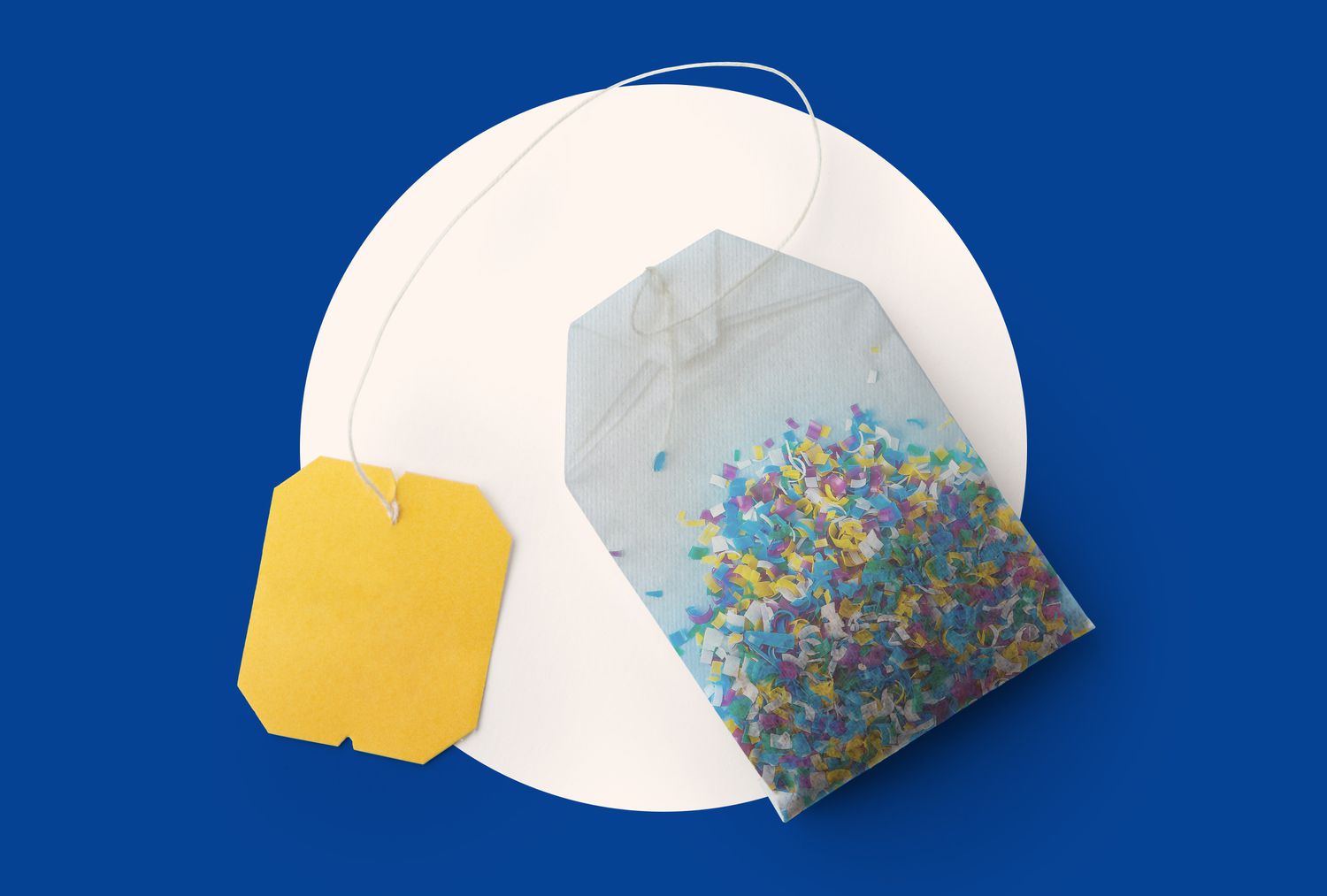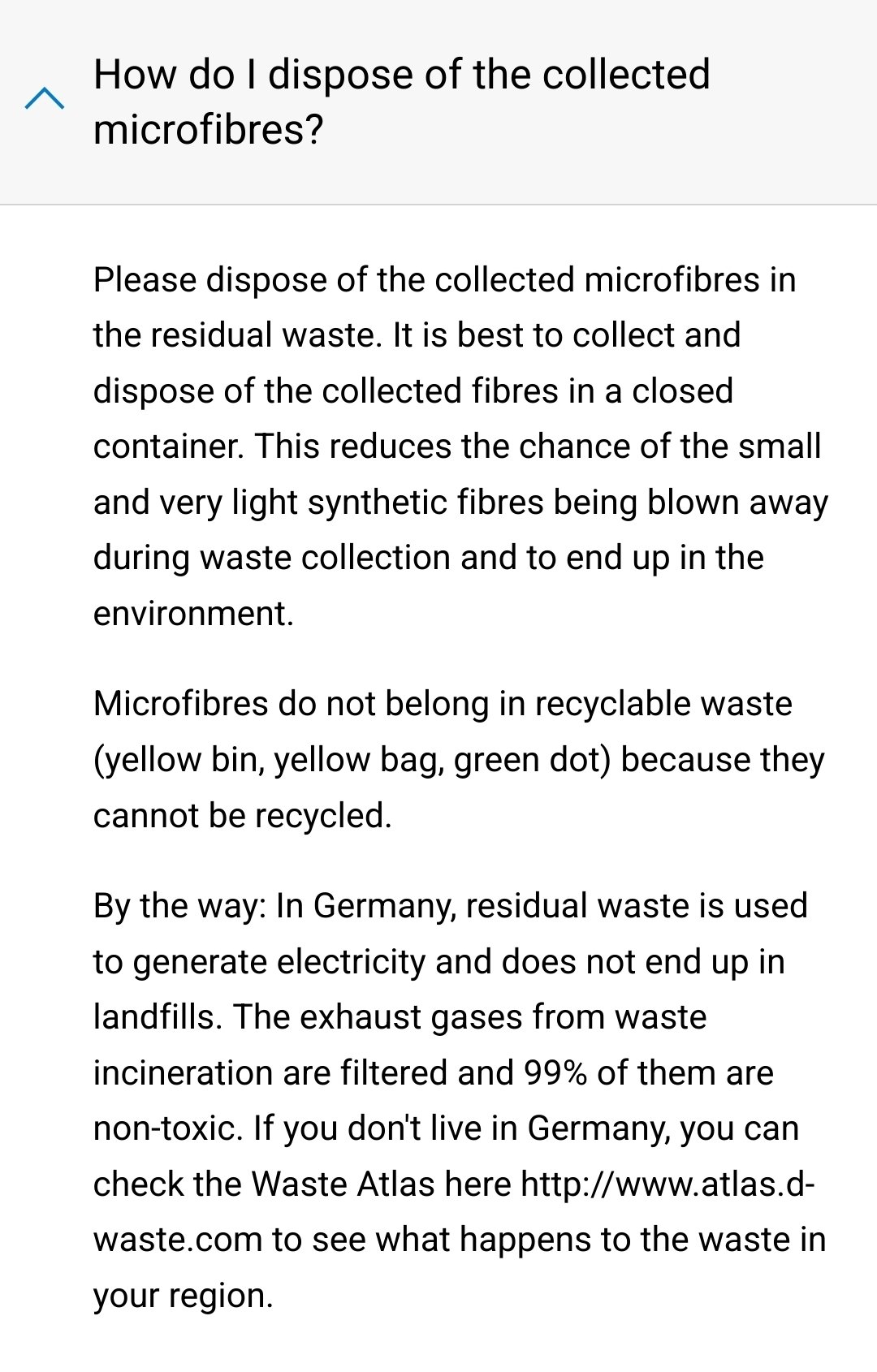- cross-posted to:
- [email protected]
- cross-posted to:
- [email protected]
Summary
A new study from Spain’s Autonomous University of Barcelona reveals that tea bags made from nylon, polypropylene, and cellulose release billions of micro- and nanoplastic particles when steeped in boiling water.
These particles, which can enter human intestinal cells, may pose health risks, potentially affecting the digestive, respiratory, endocrine, and immune systems.
Researchers urge regulatory action to mitigate plastic contamination in food packaging.
Consumers are advised to use loose-leaf tea with stainless steel infusers or biodegradable tea bags to minimize exposure.
No!
biodegradable tea bags
You want “compostable” or better, “home compostable”. Biodegradable is a word that is completely twisted, and items that include plastics will use that word no matter how untruthful it is to the spirit of the meaning.
Even a lot of the stuff labeled as “compostable” doesn’t really compost under real life conditions, if you want to avoid this (and make better tea) just use loose leaf and a reusable metal pods or pour it through a fine mesh strainer. No microplastic bullshit and it just tastes better than the stale bagged shit.
Consumers are advised to …
Consumers are advised to check whether tea bags in their region are even made of these materials.
Edit: Also, “billions”? The cookie warning is borked on the foodandwine.com article so I can’t read it but: https://www.dpa-international.com/trends-and-features/urn:newsml:dpa.com:20090101:250109-99-540705/ “Tea bags releasing ‘millions’ of microplastics into tea, study shows” - where does that difference come from?
deleted by creator
Cool, now do coffee pods.
No it doesn’t. This study is unscientific garbage and should be retracted.
Their “simulation” of making tea involved 300 teabags boiled in 600ml of water at 95 C while being stirred at 750rpm for an unspecified amount of time. They then took counts using undiluted samples of that liquid.
It isn’t clear why they chose such an absurd methodology, but it is absolutely spurious to draw conclusions from this about teabags used under normal conditions.
.
Either way, loose leaf is just better.
I’ve worked in a lab before. You would do it this way for a bunch of reasons.
First it’s more reliable to measure something if there’s a lot than a little. The effects of your measurement uncertainties and your error professional goes down. So better to measure 300 teabags than just 1 if you can find out the same thing from doing it that way.
As others have said, 95 deg C is hot, but it is well short of a boil.
The magnetic stir bar doesn’t blend the water, it just moves it around into a swirl, even at 750 rpm because it’s small.
If the ideal study would be to steep 1000 teabags in teacups with just-boiled water and measure the micro plastics to see how much is released on average, I can see why they did it this way instead when their focus was on what type of plastic is released vs exactly how much. I’m not sure the food and wine journalist did a great job walking the reader through this though.
So have I, and I understand why they would have chosen this approach. My issue isn’t their bench technique per se, it’s in their calling equivalence to tea brewing at home and articulating conclusions based on that.
Your objection to my describing it as “blending” is fair. However, it would absolutely not be plain swirling. With such a low ratio of liquid to teabags the physical agitation will be quite significant. Most people do not have multiple teabags in their teapot all colliding with and abrading each other while steeping.
However, the biggest cause for retraction is their failure to report accurate volumetric ratios. They used 2ml water per teabag and then reported their findings as particles/ml. It should be immediately obvious that this cannot be equated to the particles/ml that would have been derived from using 350ml per teabag, and yet they never make that conversion. I’m not going to speculate as to whether this was a result of intent to mislead or a simple mistake, but it utterly obliterates their talking point of “billions of particles”.
Yeah that all makes a lot of sense!
So can I still have my tea or what? I’m inclined to trusting you over some barcelonians
Just go with loose leaf, if you like tea you’ll be doing yourself a favor anyways because it’s much better tea.
You’re so right. Azores (a part of Portugal) produces some great tea. Love the green variety
Just be sure to brew it at the right temperature. I ruined green tea for years until someone pointed out I was doing it wrong by using boiling water. I never realized you’re supposed to brew it at or under 160F
The green variety you shouldn’t brew as hot Just a broil (is that the word?) And also leave it longer in the “stew”
It is not the word. Broiling is a cooking technique of using very high direct radiant heat (i.e. cooking below the heat source). In England and Europe it’s often called “grilling”.
Sorry, late reply. Not a native speaker, and although I know a bit of english, I struggle with some culinary terms. I thought broil was when you heat water just below boiling point, like 80°C instead of 100°. What’s the term for that? It’s more like poaching 😅
Yeah, just don’t put your teabag in a blender.
Gotchya
“got ya” or “gotcha” - make up your mind :D Although “got it” would be better here. From my non-native speaker understanding, “got ya” is more like “I got what you are saying”, whereas “gotcha” is more commonly used as “I got you there” - as in “I played a prank/practical joke on you and you fell for it”.
But this might just be something that varies with regional preference, or even from speaker group to speaker group.
You might be overthinkya 😅
You might not be enough grammar OCDya :p
No it’s not, because I use a stainless steel capsule and loose leaf tea, which is superior in every way (even if microplastics weren’t an issue).
If you don’t make your tea like this, do yourself a favor and upgrade to some quality loose leaf!
Edit: lol, I love that this is getting downvotes. Are there disposable teabag enthusiasts out there?
I think the new eu bottle caps as well(even when using milk cartons) becuse when you open it they usually have a piece sticking out on the cap that catches on the threads to keep it open, and sometimes i see small plastic pieces flying everywhere when i open one of them. Presumably the plastic catch is breaking pieces of the thread off.
I believe there was a study that plastic bottle cap seals release tens or hundreds of thousands of plastic particles upon breaking open, however I don’t think they would be visible to the naked eye. More likely you are seeing dried up particles of whatever liquid is inside the container.
Yeah maybe. I just dont understand in general why we are using plastic. Aluminuim and glass fill basically evey usecase of plastic.
Glass is heavier and more breakable, making it more expensive (read: less profitable for companies) . There’s a limit to how much people will pay for stuff, so the more corners companies can cut to reduce their costs, the more money they make off of us and hope us consumers don’t catch on that the overall quality has gone down.
Laws my guy. You can literally just tell big companies that they need to handle all the shit without placing any costs on consumers(which is literally what the eu did with usbc and repair) and companies as being machines that make max profit WILL find the most efficient way of doing it. This is why i believe in some forms of highly regulated capitalism, because it is extremely efficient in going arround these restrictions. Just tell them they are legally required to do something(and the fine is high enough that they are forced to do it) and they will find a way.
You can, if you have a functioning republic.
Glass is by far superior but shipping it is more costly and results in more breakage.
All aluminum food and drink containers still have a plastic liner in them to avoid corrosion. Still way better than fully plastic containers for most uses though.
Has anyone checked how much particles I produce when I wash my fleece jacket.
Get yourself a Guppy friend 🙂
So here’s one (potentially major) issue with these bags:
While the bag catches a lot of microplastics, it is also leaving a lot more in your clothes because they were washed and contained in that bag. Where do those loosened microplastics on your clothes go? Either into the dryer (or outdoor line-dry) and expelled into the air, or you indoor line-dry your clothes and release more microplastics as you wear your clothes, breathing them in as you go about your day.
So people would essentially be paying $35 a bag to slightly improve wastewater at the expense of increased air pollution. If you indoor line-dry those clothes, you put your own health (and potentially the health of those around you) at greater risk.
The only non-polluting solution at this point is to not buy, wear, or launder any plastics-based fabrics. This includes polyester (a lot of people apparently are unaware of this).
Very interesting! The Guppy Friend is only for use in the washer, then the micro plastics are collected in the end of the bag, which you take out like lint in a dryer, but I still think your point is very valid! I dry all my clothes on a rack, and I’ve only got two fleece shirts (never getting one again, these are many years old), so it’ll be thrown out when I no longer need it, but interesting point with the air particles!
Still, how much micro plastics are we not getting from plastic cups, bottles, door wrapping etc? Too much lol
I’ve read that using fleece/plastic clothing you already have is better for the environment than throwing them out, as the plastic is already there.
Still, how much micro plastics are we not getting from plastic cups, bottles, door wrapping etc? Too much lol
Yeah, that’s the thing! It’s near impossible to quantify not only the number and size of plastic particles being released, but also from what sources and how impactful it is on our health over time. There are so many variables involved.
I like the idea of the guppy bags, but honestly we need strict government regulation around the world to make a real difference in stopping plastic and PFAS pollution/contamination.
Certainly not an expert in the field here, but I’m not sure there’s much environmental benefit from laundry bags of that sort, given the collected microplastics optimistically end up - Germany excluded - collated in your local landfill.
Guppyfriend even recommends sealing them in a container for disposal to ensure they don’t blow around during waste collection and transport. This assumes of course that you can successfully transfer microplastic fibres from a large bag into a small container without spillage, but that’s a matter separate from my conjecture.
While I don’t think any particular company that makes similar bags is purposefully guilty of this, the marketing strategy used to promote these as environmentally responsible products just smells like greenwashing to me.
The ones I’ve had are also made of synthetic materials, and so eventually break down and begin releasing their own fibres.
Frankly, the true environmental benefit I see is something I’ve never seen advertised: I can wash groups clothes I want kept from intermingling in the same load and therefore run the machine half as often.
I’m in Denmark, where we burn our non-recyclabes, so I knowit won’t end up in a landfill. Let’s burn them planet instead, lol.
OMG. That’s a good way to start the new year. Now my daily tea is going to be filled with guilt and worry.
Just buy paper tea bags or loose leaf tea. The article is talking about those stupid nylon “pyramid” tea bags.
A lot of the paper bags are coated in plastic. So loose is your best option.
What isn’t releasing billions of microplastic particles? We’re fucked.
When someone is getting laid and he drops a load in her, he’s probably injecting microplastics.
Just a thought for next time you are in bed with someone.
And if you don’t- the condom? Also releasing microplastics. That glass of water you have afterwards because you’re all hot and sweaty and thirsty? Also full of microplastics.
As long as you’re using latex/nitrile condoms you should be good as latex and nitrile aren’t plastics. Some of the alternatives for people with latex allergies can have plastic in them though.
remember, microplastics are formed in the balls
My tinfoil hat theory is that we’re going to find out that toothbrushes are a major source of them
Not even micro. There is a nonzero chance you’ve ingested the bristles at some point
Oh they are.
Vegans hate this one trick to avoid microplastics from toothbrushes; horsehair toothbrush.
Also, you guys rinse your mouths, right?
Rinse your mouth? No thank you, I swallow it all! I paid for that toothpaste and I’m getting my money’s worth.
This warning only applies to the pyramid tea bags and not the paper sachet.

It did list cellulose bags as one source, however I don’t quite understand how. Additive to strengthen the material?
Plastic coating to make the bag more resistant to heat.
Cellulose isn’t plastic though, it’s the sugar that makes up plant cell walls, like wood. Cotton fibers are 90% cellulose https://en.wikipedia.org/wiki/Cellulose
I’m confused why they included cellulose without clarifying that it’s not a petrochemical, unless cellulose micro and nano particles are also an issue now. Maybe I should read the original study…
They close the bags with a dot of plastic based glue so it doesn’t open
What I meant to say is that the cellulose is coated with plastic. I learned this from another post in the same thread.














